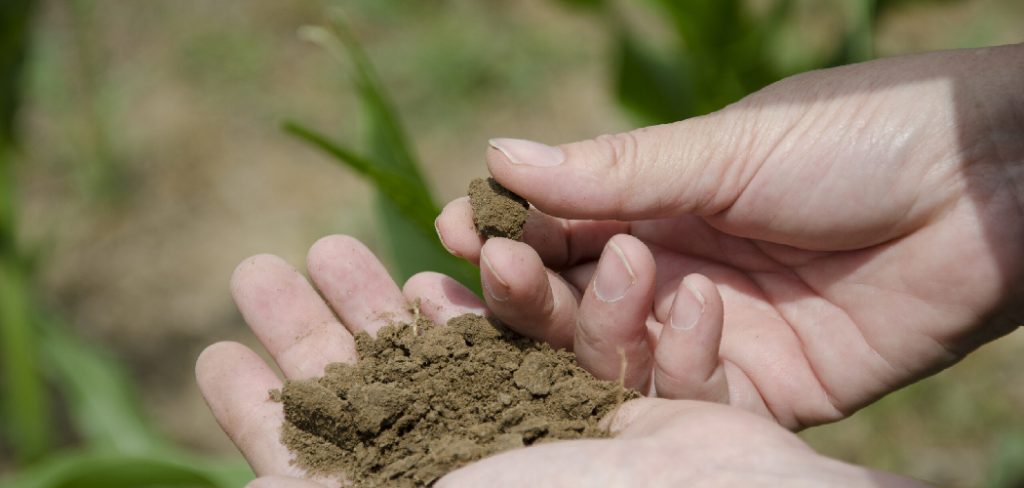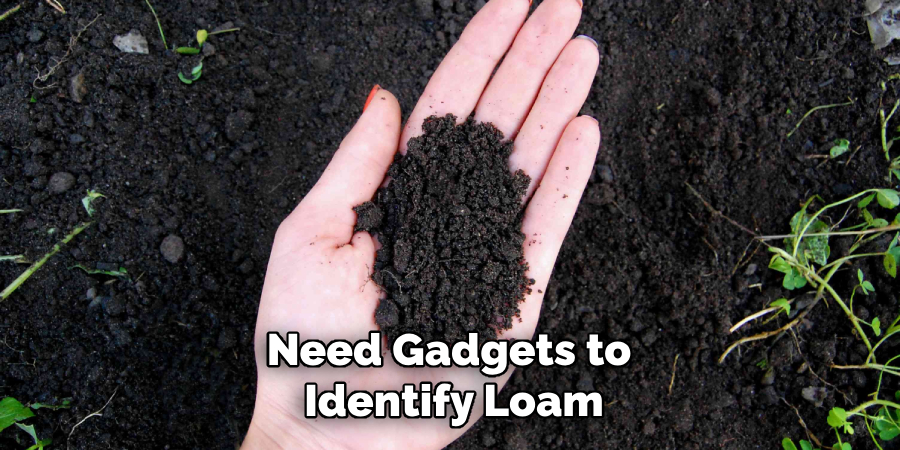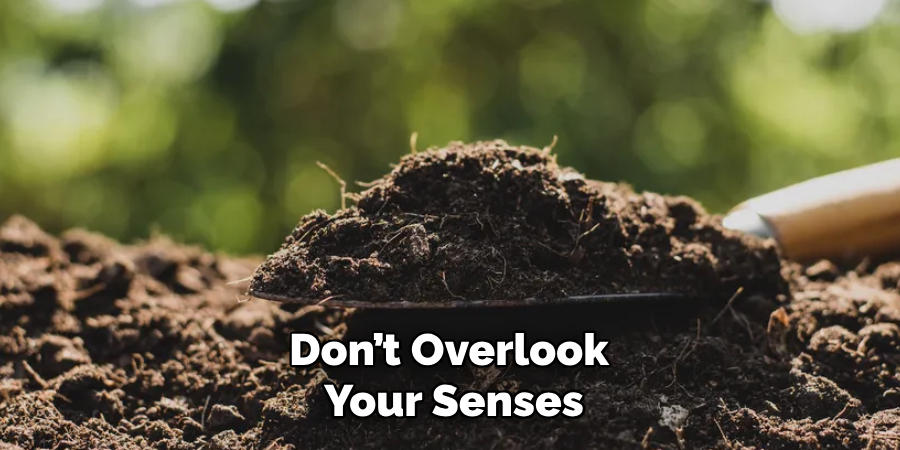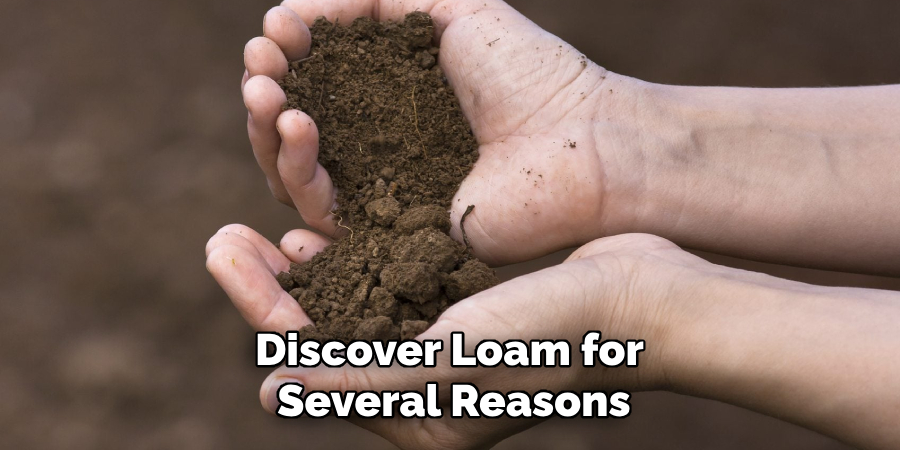When it comes to successful gardening and farming, understanding the type of soil you’re working with is essential. Loam soil is considered the gold standard for plant health, thanks to its exceptional balance of sand, silt, and clay. Its qualities—such as outstanding fertility, great water retention, and a perfect texture for root development—set it apart from other soil types.

Learning how to identify loam soil can transform your gardening results and ensure you’re offering the best foundation for your plants. In this guide, we’ll walk you through the practical steps and tests you can use to confidently recognize loam soil, ensuring your gardening journey starts with the right groundwork.
What Is Loam Soil?
Loam soil is a perfectly balanced blend, typically made up of 40% sand, 40% silt, and 20% clay. This unique combination gives loam its fine, crumbly structure, making it an ideal medium for most plants. Unlike soils that are predominantly sandy, silty, or clay-based, loam provides both excellent drainage and moisture retention. Its structure allows plant roots to receive plenty of oxygen and nutrients while preventing water from draining away too quickly or compacting around the roots. This adaptability means loam soil supports a wide range of gardening activities, from growing vegetables and flowers to fruit trees and lawns.
Characteristics of Loam Soil
Identifying loam soil by sight and touch is straightforward once you know what to look for. The texture feels soft and crumbly in your hands rather than gritty or sticky. Loam usually boasts a rich, dark color that signals its high organic content. When squeezed, it forms a loose ball that holds its shape briefly but easily falls apart, unlike sticky clay or sandy soils that do not form a ball. This combination of color, texture, and structure is a hallmark of fertile, healthy soil.
Importance of Identifying Loam Soil
Recognizing loam soil in your garden or fields is more than just a technical detail—it’s a practical step toward robust plant growth and impressive yields. Loam allows for better root development because roots can easily penetrate and spread, drawing the nutrients and moisture they need. Plants in loamy soil establish themselves quickly and resist stress from drought or heavy rainfall better than those in other soil types. For gardeners, the rewards are lush flowerbeds, productive vegetable patches, and resilient lawns. For farmers, higher yields and healthier crops are a direct result.
Tools for Identifying Loam Soil
To master how to identify loam soil accurately, both professional and simple tools can make a big difference.
Essential Testing Tools
The most common tools for analyzing soil properties include pH testers, soil texture kits, and plain glass jars for sedimentation tests. A basic pH tester helps determine the soil’s acidity or alkalinity—loam tends to hover in the neutral range (around 6-7.5). Soil texture kits, available at most garden centers, provide step-by-step instructions and comparison charts. For a DIY approach, a clean glass jar, water, and a bit of patience can help you separate the soil’s components for easy visual inspection. Before using any test, make sure to take soil samples from different spots in your garden or field, combining them for the most accurate overall assessment.
Using Your Hands for a Quick Test
You don’t always need gadgets to identify loam. Start by grabbing a small handful of damp soil and rubbing it gently between your fingers. If the soil feels gritty, it’s high in sand; if smooth and powdery, it’s silty; and if sticky or forming a long ribbon, it’s clay-heavy. True loam feels soft, slightly moist, and crumbly. Gently squeeze the soil into a ball.
If it holds its shape but crumbles easily with a touch, you’ve likely found loam. Sight and smell are helpful, too—loam is usually dark and has a pleasant, earthy aroma. With practice, these hand tests become quick methods for identifying loam in the field without equipment.

How to Identify Loam Soil: Methods to Identify Loam Soil
Several simple, reliable techniques will help you determine if your soil is loam.
The Sedimentation Test
A sedimentation test is an excellent way to analyze soil composition at home. Start by collecting a cup of soil from your garden and removing any stones, sticks, or debris. Place the soil in a transparent jar and fill it with water, leaving some space at the top. Add a drop of mild dish soap to help disperse the particles, then shake the jar vigorously for several minutes.
Let the jar sit undisturbed for several hours (or overnight). The soil will settle into distinct layers: sand at the bottom, silt in the middle, and clay at the top. Measure the depth of each layer and calculate the percentage. If your sample is close to the ideal 40-40-20 ratio, you know you have loam soil!
The Ribbon Test
Another hands-on method is the ribbon test. Take a small handful of moist soil and roll it between your palms into a ball, then try to flatten and squeeze it into a ribbon between your thumb and forefinger. If the soil forms a ribbon longer than two inches, it’s likely clay. If it won’t form a ribbon at all, it’s sandy. A loam typically creates a short ribbon—about one to two inches—before breaking off. This test, when repeated in various garden spots, builds your confidence in recognizing loam by touch.
Visual and Smell Indicators
Don’t overlook your senses. Loam usually appears dark brown or nearly black, reflecting its high organic matter. It rarely looks pale (like sandy soil) or red and sticky (like clay). Giving the soil a good sniff is surprisingly revealing—loam smells earthy and clean. Sour odors may indicate compaction or poor drainage, both less likely in true loam.

Differences Between Loam and Other Soil Types
It’s important to differentiate loam from other, less desirable soils, especially when amending your beds or fields.
- Sandy soil feels coarse and gritty, with a light color and quick drainage. Plants in sandy soil can struggle in dry spells, as water and nutrients rapidly leach away.
- Clay soil is dense, sticky when wet, and slow for water to drain. Its reddish appearance and tendency to crack when dry can impede root movement.
- Silty soil is slippery and smooth to the touch, with a tendency to compact and limit drainage. It can look almost powdery when dry.
- Loam, by contrast, combines these elements for a just-right effect; it feels soft and friable, balances moisture and drainage, doesn’t compact easily, and supports vibrant plant health.
Practical tip: If you’re unsure, try growing a quick crop like lettuce. If the plants thrive with minimal amendments and watering, your soil is probably loam or close to it.
Benefits of Working with Loam Soil
Gardeners and farmers always rejoice when they discover loam for several reasons. Its superior nutrient content, coupled with its excellent structural properties, means plants develop deeper, healthier roots. Loam’s natural drainage prevents root rot in wet spells but retains enough water to carry plants through dry periods. This balance reduces the need for frequent irrigation or heavy fertilization. Loam is also easier to work—tilling, planting, seeding, and even hand weeding become much simpler than with more stubborn soil types. For landscapers, loam provides a stable footing for lawns and shrubs, which translates into a neater, more resilient landscape.

Correcting Non-Loam Soil for Better Results
If your tests show your garden doesn’t have a loam, there are several ways to move closer to the ideal.
Start by incorporating high-quality organic matter such as compost, well-rotted manure, or leaf mold. These amendments help sandy soils retain moisture and allow clay-heavy grounds to drain more freely. For clay soils, adding coarse sand in conjunction with organic matter improves workability and aeration. In the case of sandy soils, adding silt or loam-rich topsoil combined with compost can balance water flow. Over time, with annual additions and regular turning, even the most challenging soils can develop loam-like properties. Patience and consistent improvement are key.
Common Misconceptions About Loam Soil
A few persistent myths can confuse gardeners when learn identify loam soil. Some believe loam is rare, but most garden soils can be improved to achieve loam-like quality through regular amendment. Another myth is that all loam soils are naturally perfect; in reality, even loam requires ongoing care to stay balanced and productive. It’s also not true that loam is ideal for every single plant—some specialized species may prefer sandier or heavier soils. The real value of loam is its versatility, making it a superb starting point for most gardens and farms.
Testing Loam Soil for Ongoing Health
Soil composition can change over time, especially with regular gardening activities, unusual weather, or amendments.
Regular Soil Testing
Periodic soil testing helps ensure you’re maintaining your loam’s optimal conditions. Aim to test for pH as well as levels of key nutrients (nitrogen, phosphorus, potassium). Local garden centers often offer quick and affordable soil tests, or you can send samples to an agricultural lab for a complete analysis.
Applying Maintenance Practices
To keep your soil’s loam properties intact, add organic matter annually—fall is an excellent time as beds are cleared. Mulch the surface to protect it from erosion, dry-out, or compaction. In heavy rainfall areas, monitor for signs of compaction and gently aerate as needed. Proactive care guarantees ongoing soil fertility year after year.

Conclusion
Knowing how to identify loam soil is one of the most valuable skills any gardener or farmer can acquire. By combining observations of texture, color, and simple at-home tests, you can distinguish loam from other soil types with confidence. The benefits—robust plant growth, easier garden management, and richer harvests—make investing time in this process worthwhile.
Don’t be discouraged if your soil isn’t perfect yet; with ongoing care and thoughtful amendments, most soils can be coaxed closer to loam’s ideal qualities. Keep testing, keep improving, and let your plants show the results of your efforts, because understanding how to identify loam soil is the first step towards growing success.
About
Jennifer Branett is a distinguished figure in the world of Garden design, with a decade of expertise creating innovative and sustainable indoor solutions. His professional focus lies in merging traditional craftsmanship with modern manufacturing techniques, fostering designs that are both practical and environmentally conscious. As the author of garden, Jennifer delves into the art and science of garden-fix, inspiring artisans and industry professionals alike.
Education RMIT University
(Melbourne, Australia) Associate Degree in Design (Jennifer Branett) Focus on sustainable design, industry-driven projects, and practical craftsmanship. Gained hands-on experience with traditional and digital manufacturing tools, such as CAD and CNC software.
Nottingham Trent University
(United Kingdom) Bachelor’s in Garden and Product Design (Honors) Specialized in product design with a focus on blending creativity with production techniques. Participated in industry projects, working with companies like John Lewis and Vitsoe to gain real-world insights.Publications and Impact
In indoor, Jennifer Branett his insights on Garden design processes, materials, and strategies for efficient production. His writing bridges the gap between artisan knowledge and modern industry needs, making it a must-read for both budding designers and seasoned professionals.
